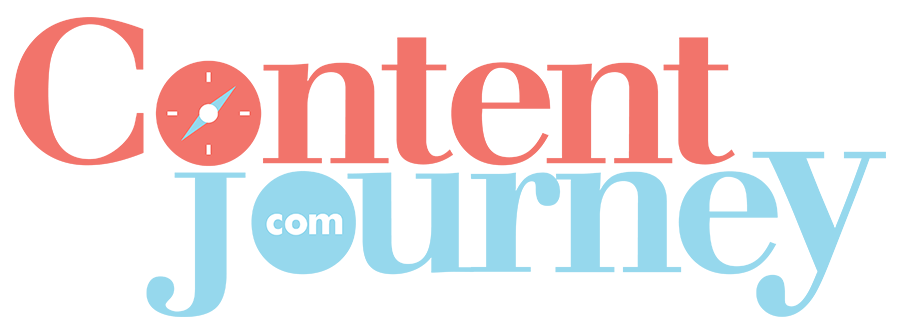Lead Magnet Examples You’ll Want to See
An email list full of people interested in what your company has to offer helps a ton to drive sales. But getting people on that list requires something to entice them to sign up. Creating a lead magnet can help you build your subscriber base so you can nurture your audience until they’re ready to buy. The lead magnet examples in this post will show you exactly how it’s done.
What is a Lead Magnet?
You’re probably here because you want to grow your email list, but you may be wondering what a lead magnet is and how it can make your business more profitable.
A lead magnet can take many forms. At its core, a lead magnet is a free resource or special deal given in exchange for contact information. Think discount codes, webinars, e-books, or anything else you’ve ever received in exchange for your email address. It’s called a lead magnet because it attracts new leads like a magnet, then puts those leads into the newsletter subscriber list.
The goal of a lead magnet is to capture the contact information of prospective buyers and turn them into paying customers. Once someone gives their information in exchange for the lead magnet, you can nurture them through targeted email content until they become a customer. Typically, emails that nurture those leads build brand awareness, answer questions these leads may have, or showcase your company’s expertise. The goal is to encourage those leads to trust your company so they continue moving down the sales funnel until they become buyers.
But before you can nurture those leads, you have to get them to sign up for the email list in exchange for that lead magnet. Good lead magnets share valuable information and solve a problem for your target audience. It’s the first step in building trust with your leads.
Why are Lead Magnets Important?
Lead magnets serve a vital function: to grow your audience of potential customers. A good lead magnet makes it easy to obtain contact information for potential customers. When you have that information, you can send your leads targeted content that converts them to buyers.
You can capture leads at different stages of the customer journey. For example, you can offer lead magnets within your blog content to people who visit your website. Or, you can offer lead magnets to customers who have already made a purchase. Lead magnets enable you to collect contact information so you can directly communicate with your market. That means you don’t have to worry about fighting algorithms to communicate with your audience the way you do with social media.
What Makes a Good Lead Magnet?
The type of lead magnet that resonates most with your audience is different for every business. And it’s worth noting that you may use varying lead magnets for different seasons or to attract customers at different stages of their journey. But regardless of type, there are some things a good lead magnet must do.
Solve a Problem
People give their email addresses in exchange for a lead magnet because they have a problem and they need a solution. This solution could look like providing information about a certain subject or a checklist for a particular workflow. The problem a lead magnet solves isn’t huge, but it’s enough to show potential customers that you know what you’re talking about and you understand what they need.
Lead magnets should provide some instant gratification. The minute the person signs up, they should get the answers they’re looking for in their inbox. So before you create a lead magnet, think about the sorts of problems your customer has that you can solve quickly. Then create a lead magnet around that.
Quick to Digest
A good lead magnet should be easy to consume. Your customers don’t have a lot of time, and they’ve given up valuable space in their already-overflowing inbox to be on your list. So, when you give them the answer they’ve been searching for, make sure they can consume it quickly and easily.
If you choose an e-book as your lead magnet, keep it short and sweet. No one wants to dig through the equivalent of “War and Peace” to find the answer they’ve been searching for. Checklists and printables are great lead magnets for this reason. They’re easy to read and understand in a short time.
Instantly Accessible
As soon as your lead has given you their email address, they need to be able to get the lead magnet. If they signed up, it’s because you have an answer they want, and it makes your lead magnet offer seem like a scam if they don’t get it immediately. And if it takes too long for them to receive the lead magnet, they may have forgotten they signed up in the first place and mark your emails as spam.
To ensure your lead magnets are distributed on time, set up an automation in your email marketing software. As soon as someone signs up, create an automation that sends them their lead magnet instantly.
Specific
You don’t make products or services for everyone, and you shouldn’t make lead magnets for everyone, either. A good lead magnet will attract the right people, which means it has to be specific to the needs of your ideal customer.
It can take time to determine what the perfect lead magnet might look like for your business. Take some time to think about the customers you’ve worked with and what they had in common. Think about your potential customer’s pain points and how you can best address them. Then, make your lead magnet simple and straightforward to attract the right customers.

Best Practices for Creating a Successful Lead Magnet
Not all lead magnets will attract your ideal customer. In addition to giving them the answer they need in an easily digestible way, successful lead magnets should be:
- Shareable. If your lead magnet is helpful, your audience will want to share it. Make it easy for them to spread the word and do some marketing for you.
- Relevant. Your audience has specific needs, namely, that problem they need to solve. Keep the focus of your lead magnet on that particular solution to make it relevant to your audience.
- Valuable. If your audience can access your lead magnet, they can access the rest of the internet. Your lead magnet needs to give them valuable information that they can’t easily get anywhere else.
- Consumable. Your customer wants an answer to their problem, and they want them quickly. Keep your lead magnet short and to the point so your audience can get what they need quickly and easily.
Keeping these criteria in mind will help you create a lead magnet that continually attracts new potential customers.
Lead Magnet Examples You’ll Want to See
Lead magnets are as unique as the companies that offer them. These lead magnet examples show that no matter the format, you can offer valuable information to your customers.
Webinar
Webinars are typically live events where you can present information to your audience and answer their questions at the end. If you record the webinar, you can offer it on-demand as a lead magnet.
Webinars are great because they offer engaging video, a format that many people enjoy. Video also feels more like face-to-face communication, which helps people feel connected to the presenter.
The key to making a successful webinar is to keep the topic focused on a specific pain point.
This webinar is from All Counseling, an organization that helps counselors grow their practice, is a great example.

Permission for your Emotions to Take Up Space with Nikenya Hall: [Webinar]
E-books
E-books are great for solving a specific problem and can vary in length. The perfect length depends on your audience and your topic. E-books tend to be easy reads, so don’t get bogged down in data or overwriting. A good e-book is educational and entertaining, and many of them are highly visual too.
This e-book is from Pressable, a WordPress hosting company, and shares how to make your website multilingual, a question many website owners have.
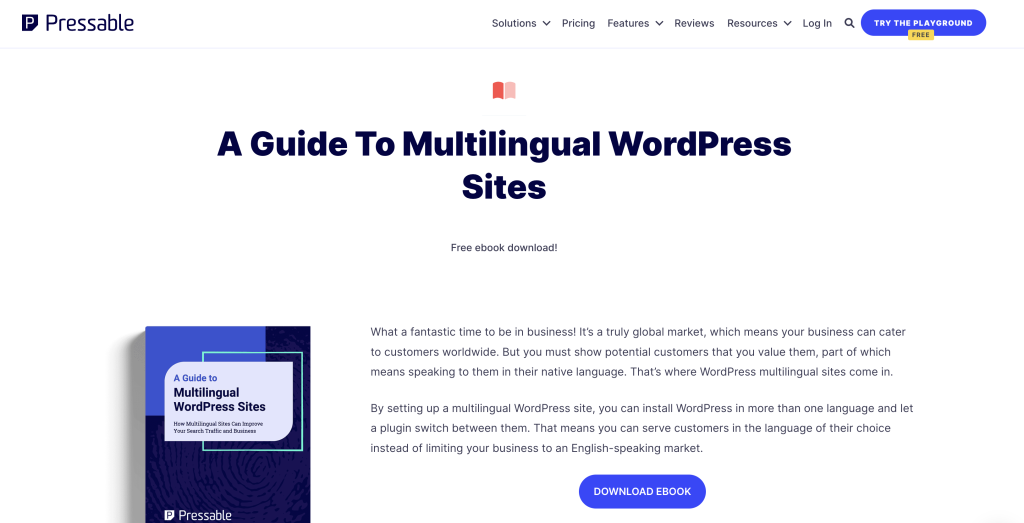
A Guide to Multilingual WordPress Sites: [E-books]
Templates
What’s more valuable than saving your potential customer some time? Templates do just that. Whether you’re offering templates for social media posts, slide decks, case studies, or checklists, your customers will appreciate having a template to work with rather than having to make something from scratch.
Mural, a digital whiteboard company, offers free brainstorming templates. These templates give customers something they can use, and they can use it within the company’s actual product.
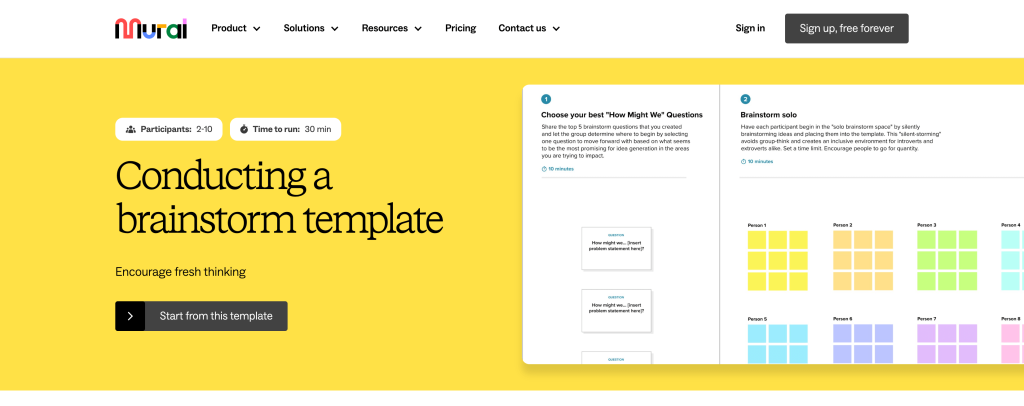
Conducting a Brainstorm Template: [Templates]
Case Studies
Case studies showcase your company’s past work and help you build trust with future customers. You can make a case study a downloadable PDF and offer it as a lead magnet. But you can also use the case study as a blog post full of calls to action to sign up for your newsletter.
Post Status, a community for WordPress professionals, created this case study for how one of their members created a website for a video game.
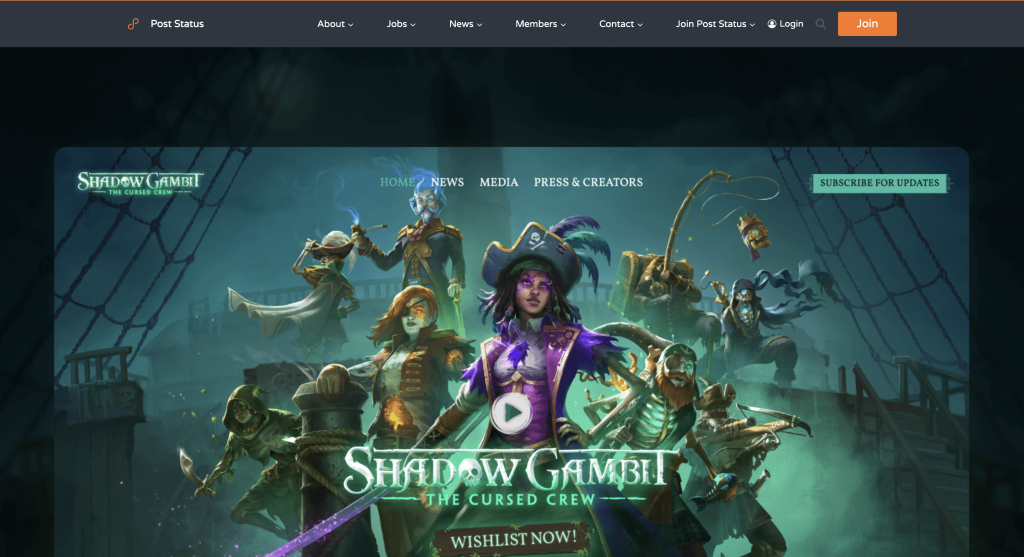
Post Status Case Study: Shadow Gambit: [Case Study]
Product Samples and Free Trials
Many subscription services offer free trials in exchange for signing up, and brick-and-mortar stores offer vouchers for free products when customers sign up for their email list. Both options are easy to create and allow your customers to try your product or service before they buy.
Day One, a journaling app, offers a free trial of its premium subscription option. You need to share your information to get the one-month free trial.
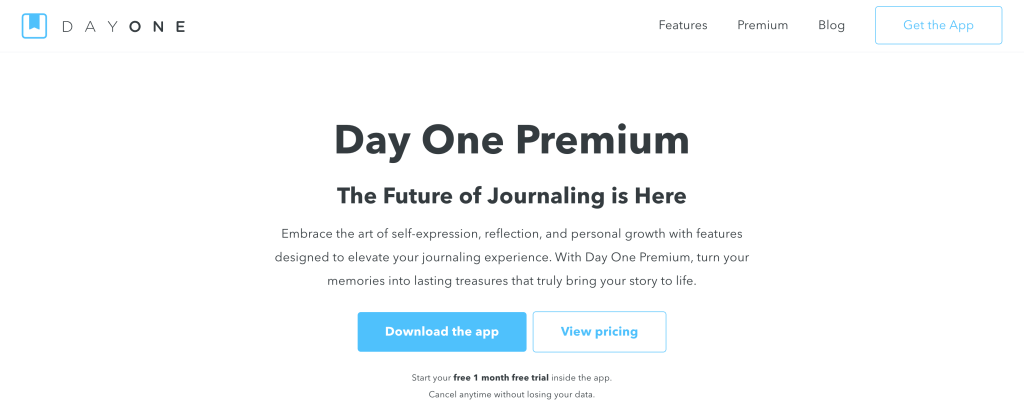
Day One Premium: [Free Trial]
Videos
With the popularity of YouTube and TikTok, many people prefer to consume video content. Exclusive video content is a great way to attract leads, especially if your target audience prefers that medium. How-to videos are great ways to answer questions your leads might have, and if you can show how some of your products or services can further help them, all the better.
Vida Bars, a haircare product company, uses video throughout their site to showcase products, including on their About page.
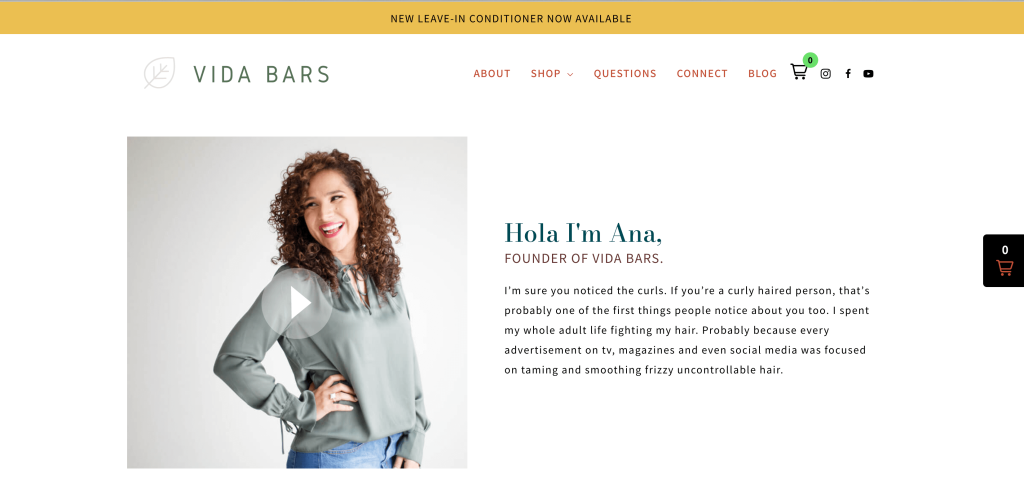
Vida Bars: [Videos]
Courses
Online and email courses help you build leads and set up your business as an authority in your field. Courses can be as in-depth as you’d like, and some are simple video tutorials, while others are lengthy lectures with slide shows. Classes can be live, or you can pre-record them and offer them on-demand. Whichever option you choose, make sure you pick something that works for you and your audience.
HubSpot, a CRM platform, offers a free course on creating internal efficiency using their product.
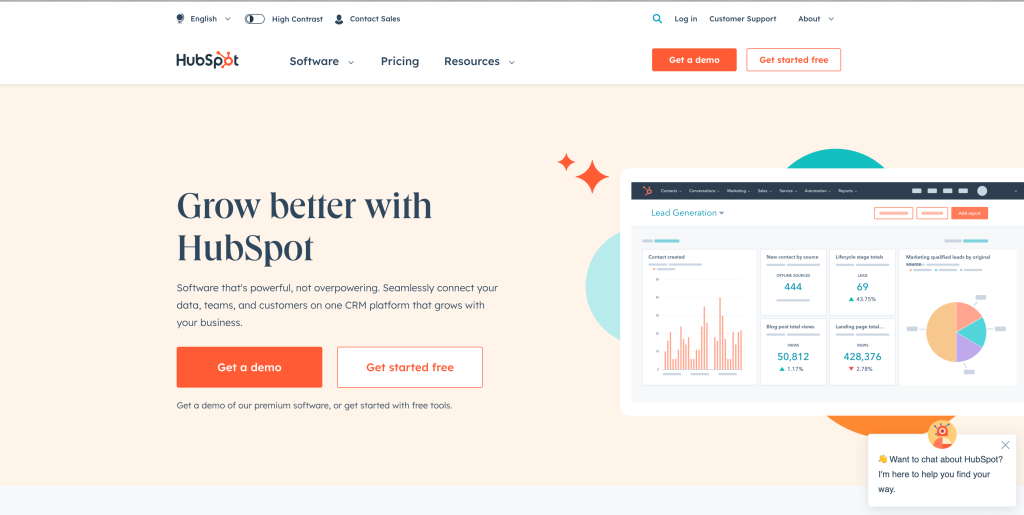
Creating Internal Efficiency with Operations Hub: [Courses]
Checklists
Checklists and cheat sheets are single-page documents that give your audience a quick solution to a problem without taking tons of time and effort to create. A good checklist is skimmable, bright, and focused on one particular topic.
Kult Media, a podcast and content creation company, offers a podcasting checklist to help you launch a professional podcast.
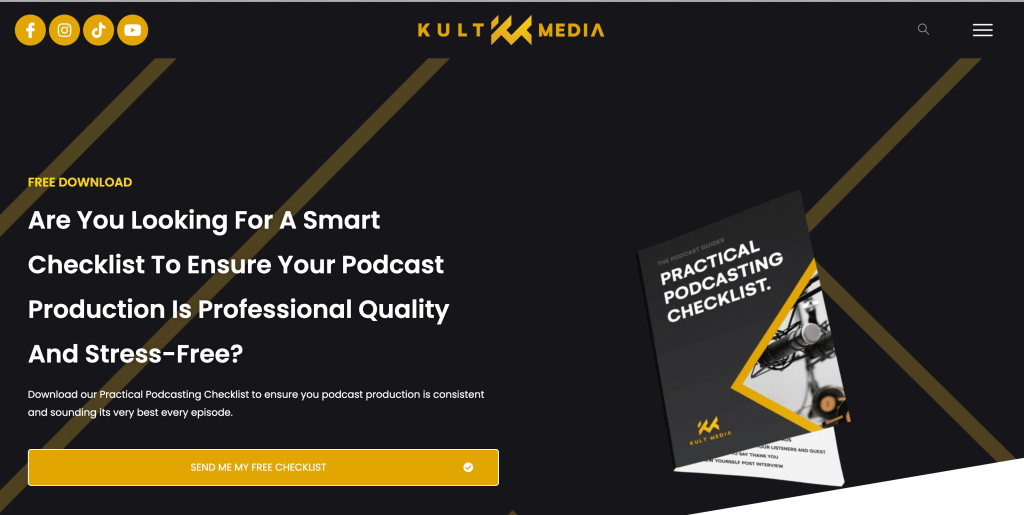
Practical Podcasting Checklist: [Checklists]
Printables
Printables are perfect if you want to create a resource for your audience they can take with them wherever they go. A checklist can be a printable, but you could also create anything from a planning page to a shopping list.
Day Designer, a company that makes planners, offers printable planning pages so people can try out the planning pages before they buy.
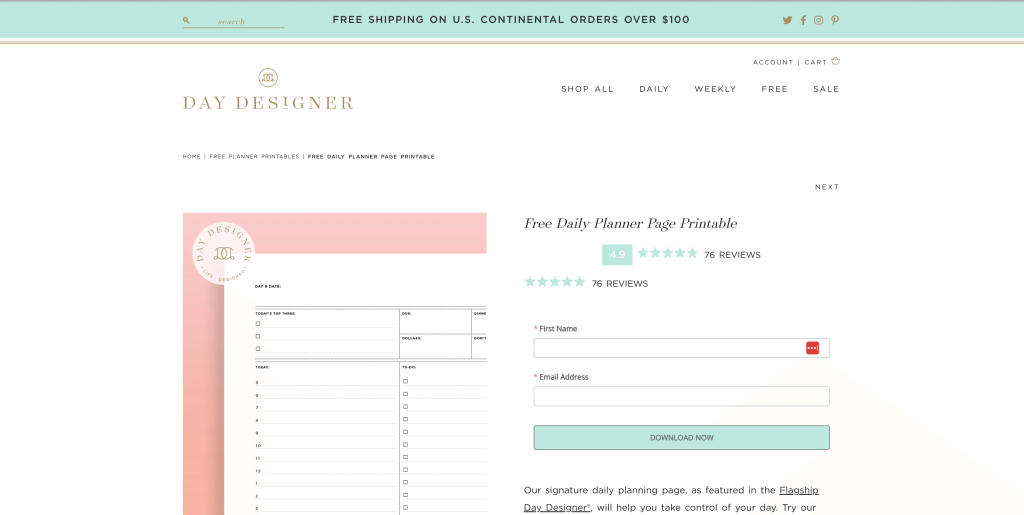
Free Daily Planning Page: [Printables]
Ready to Make a Lead Magnet?
Are you ready to create a lead magnet that brings in your ideal customers and grows your email list? Content Journey can help you with lead magnet content creation. Contact us to see how we can work together on your next lead magnet project.
